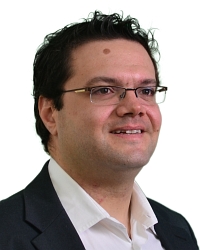TR2009-053
Compressed Sensing for Fusion Frames
-
- , "Compressed Sensing for Fusion Frames", The Wavelets XIII, DOI: 10.227/12.826327, September 2009, vol. 7446.BibTeX TR2009-053 PDF
- @inproceedings{Boufounos2009sep,
- author = {Boufounos, P.T. and Kutyniok, G. and Rauhut, H.},
- title = {Compressed Sensing for Fusion Frames},
- booktitle = {The Wavelets XIII},
- year = 2009,
- volume = 7446,
- month = sep,
- doi = {10.227/12.826327},
- url = {https://www.merl.com/publications/TR2009-053}
- }
- , "Compressed Sensing for Fusion Frames", The Wavelets XIII, DOI: 10.227/12.826327, September 2009, vol. 7446.
-
MERL Contact:
-
Research Area:
Abstract:
Compressed Sensing (CS) is a new signal acquisition technique that allows sampling of sparse signals using significantly fewer measurements than previously thought possible. On the other hand, a fusion frame is a new signal representation method that uses collections of subspaces instead of vectors to present signals. This work combines these exciting new fields to introduce a new sparsity model for fusion frames. Signals that are sparse under the new model can be compressively sampled and uniquely reconstructed in ways similar to sparse signals using standards CS. The combination provides a promising new set of mathematical tools and signal models useful in a variety of applications. With the new model, a sparse signal has energy in very few of the subspaces of the fusion frame, although it needs not be sparse within each of the subspaces it occupies. We define a mixed l1/l2 norm for fusion frames. A signal sparse in the subspaces of the fusion frame can thus be sampled using very few random projections and exactly reconstructed using a convex optimization that minimizes this mixed l1/l2 norm. The sampling conditions we derive are very similar to the coherence and RIP conditions used in standard CS theory.
Related News & Events
-
NEWS The Wavelets XIII: publication by Petros T. Boufounos and others Date: September 4, 2009
Where: The Wavelets XIII
MERL Contact: Petros T. Boufounos
Research Area: Computational SensingBrief- The paper "Compressed Sensing for Fusion Frames" by Boufounos, P.T., Kutyniok, G. and Rauhut, H. was presented at The Wavelets XIII.
